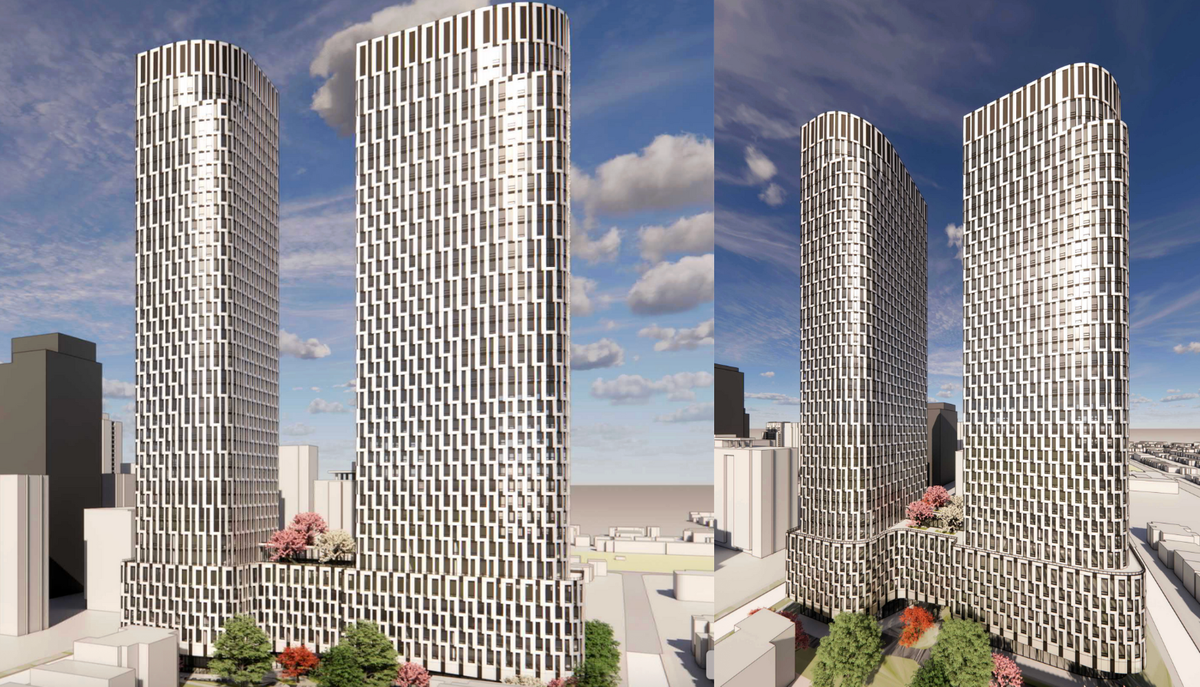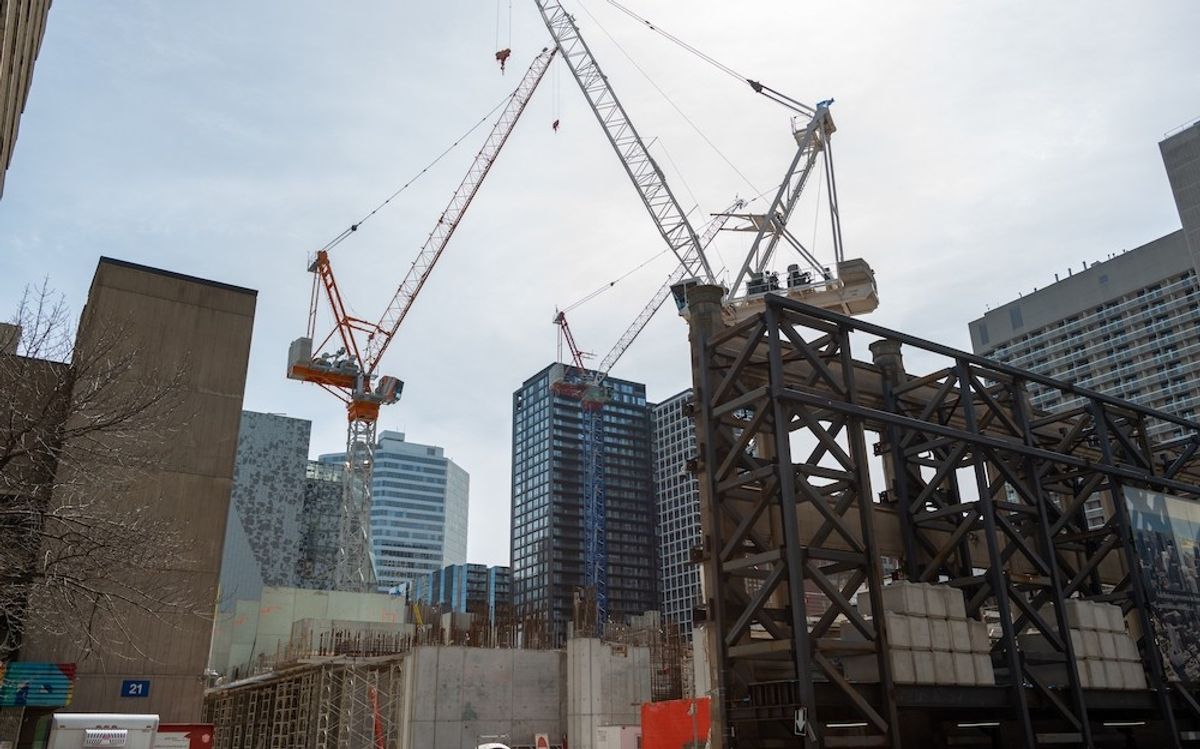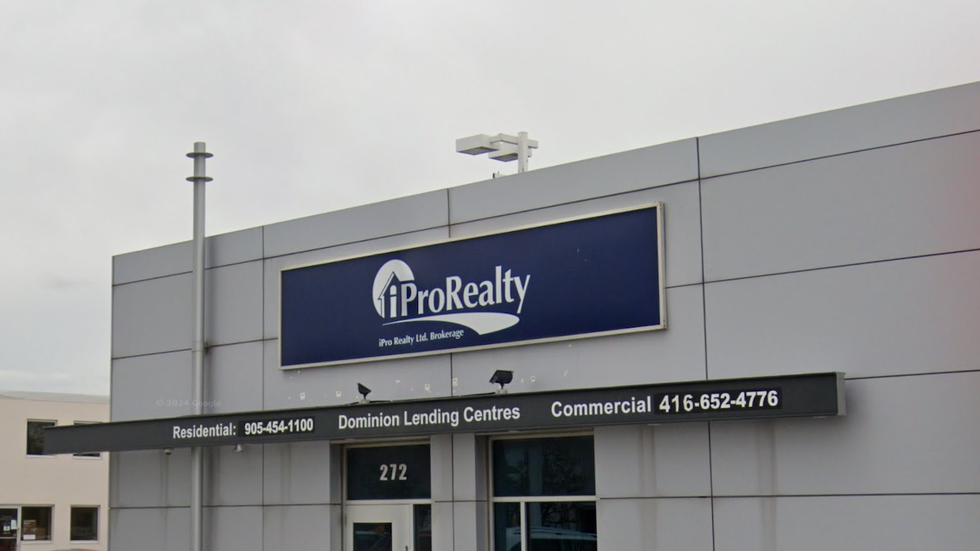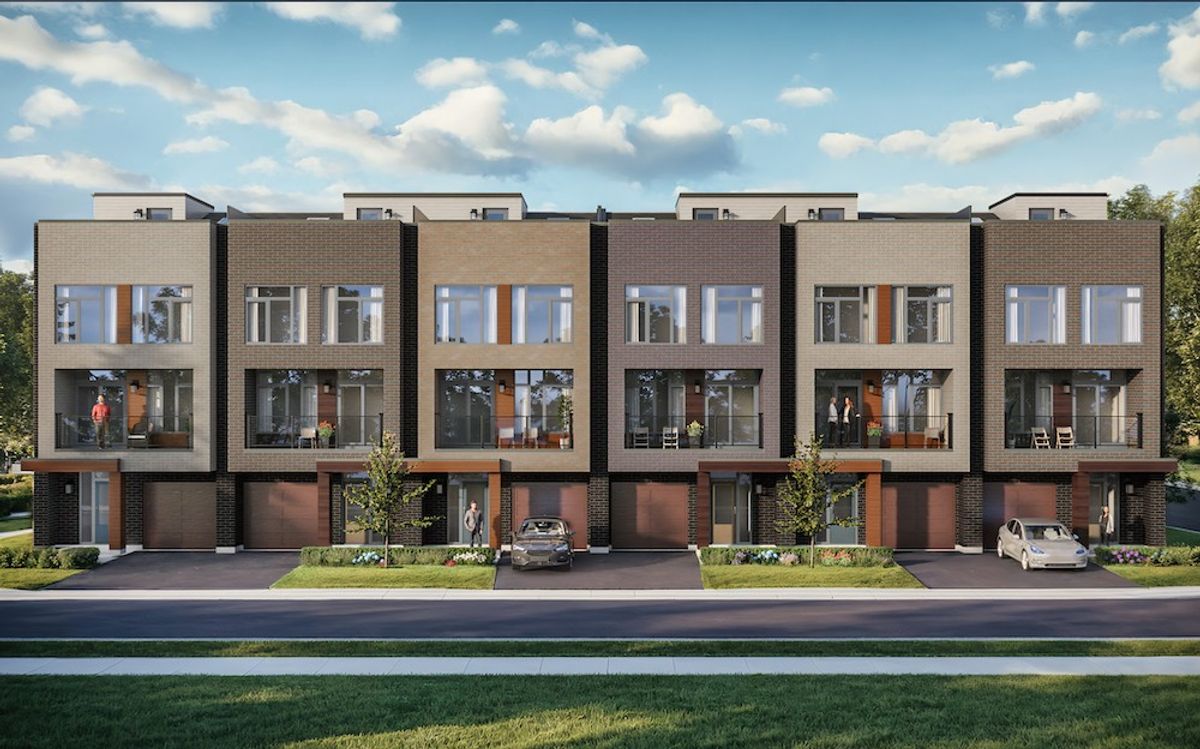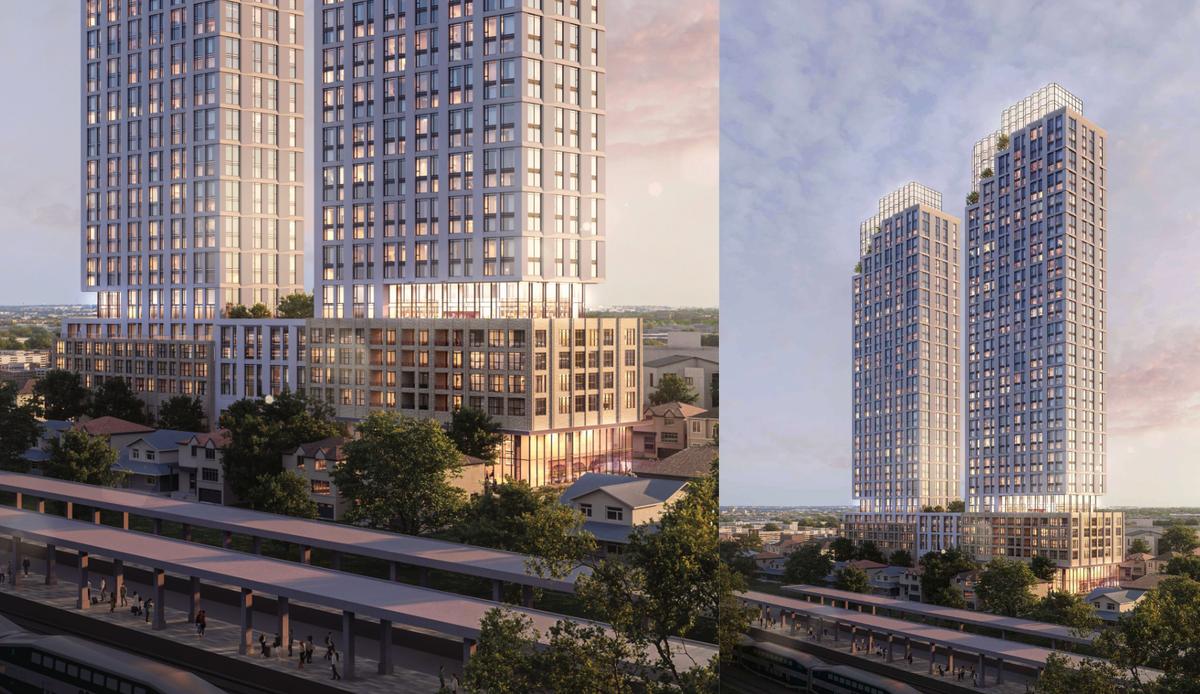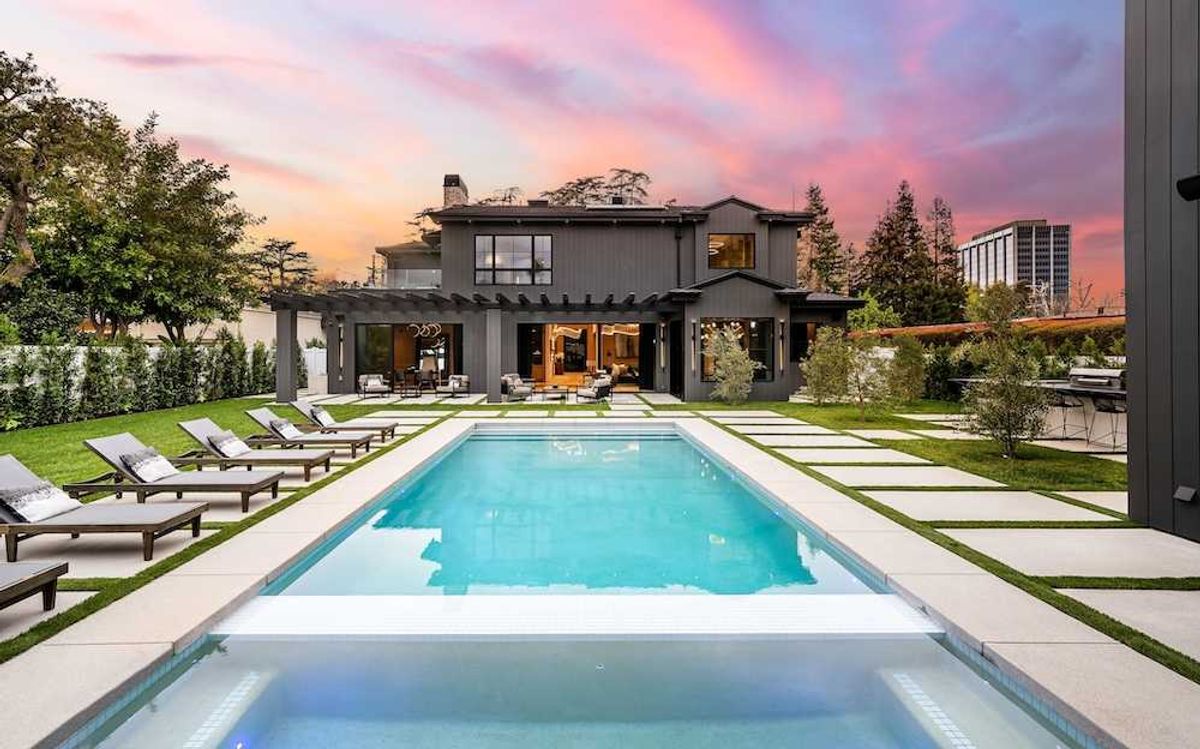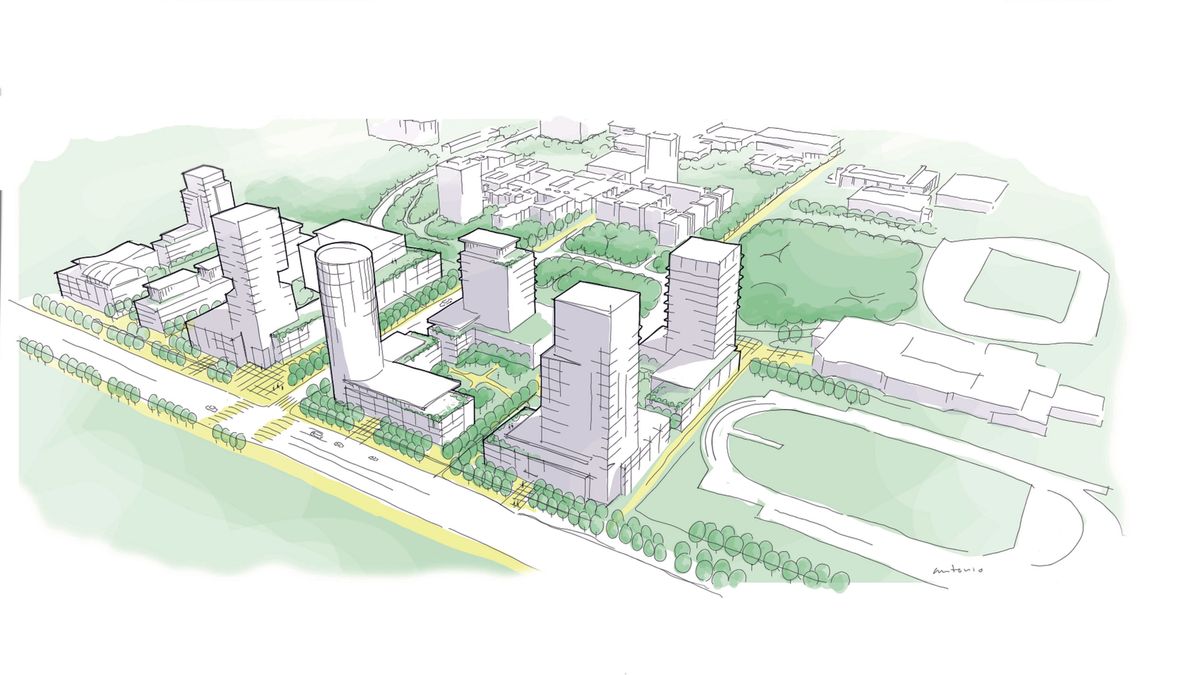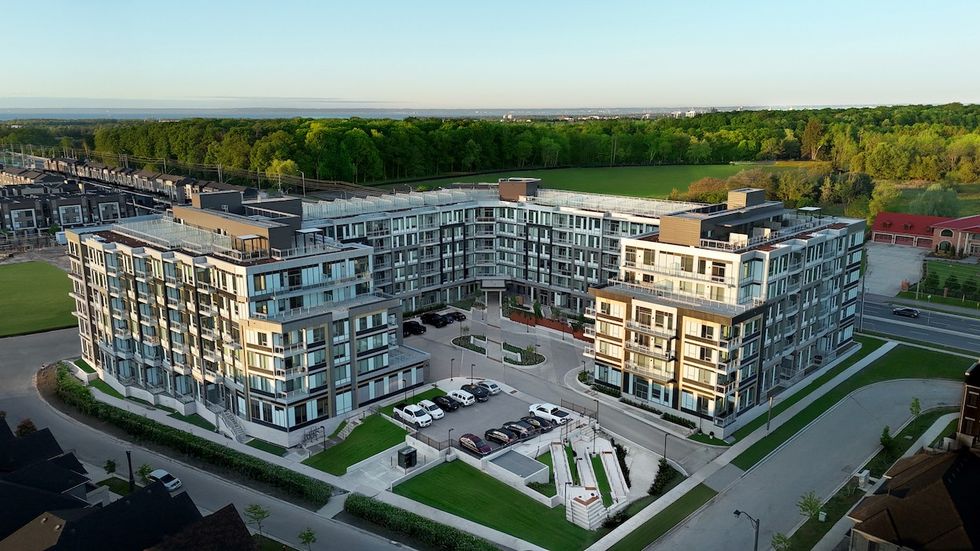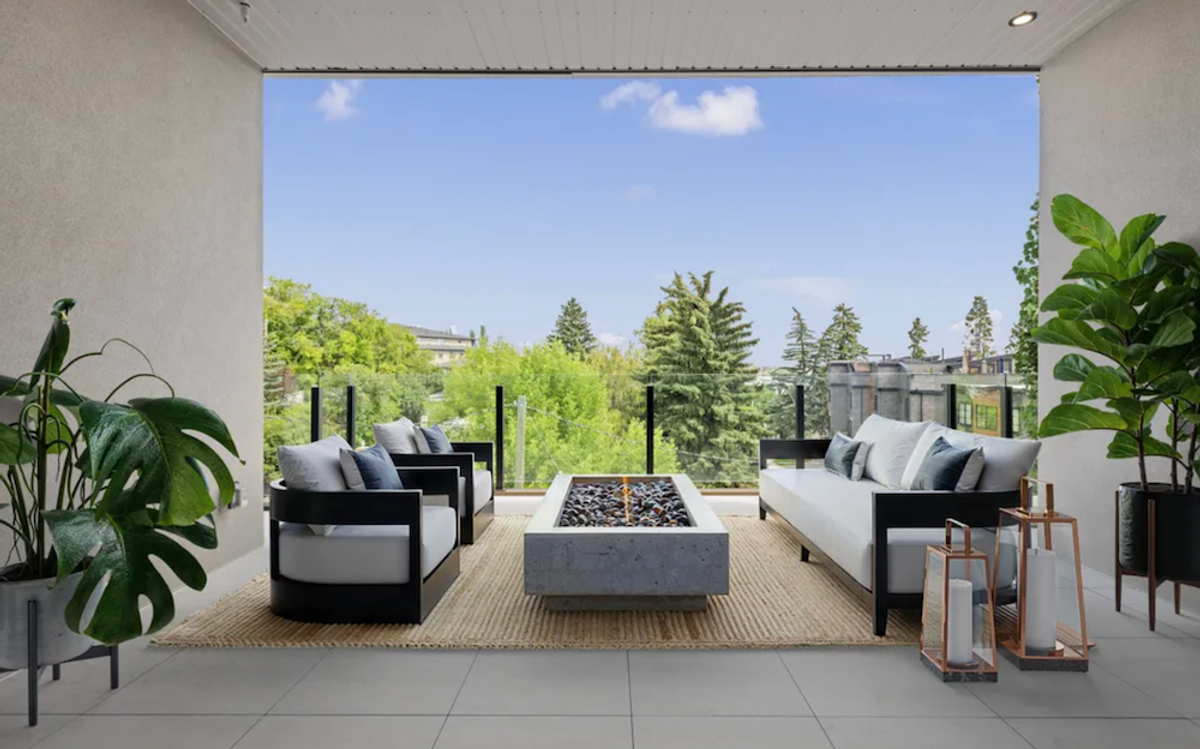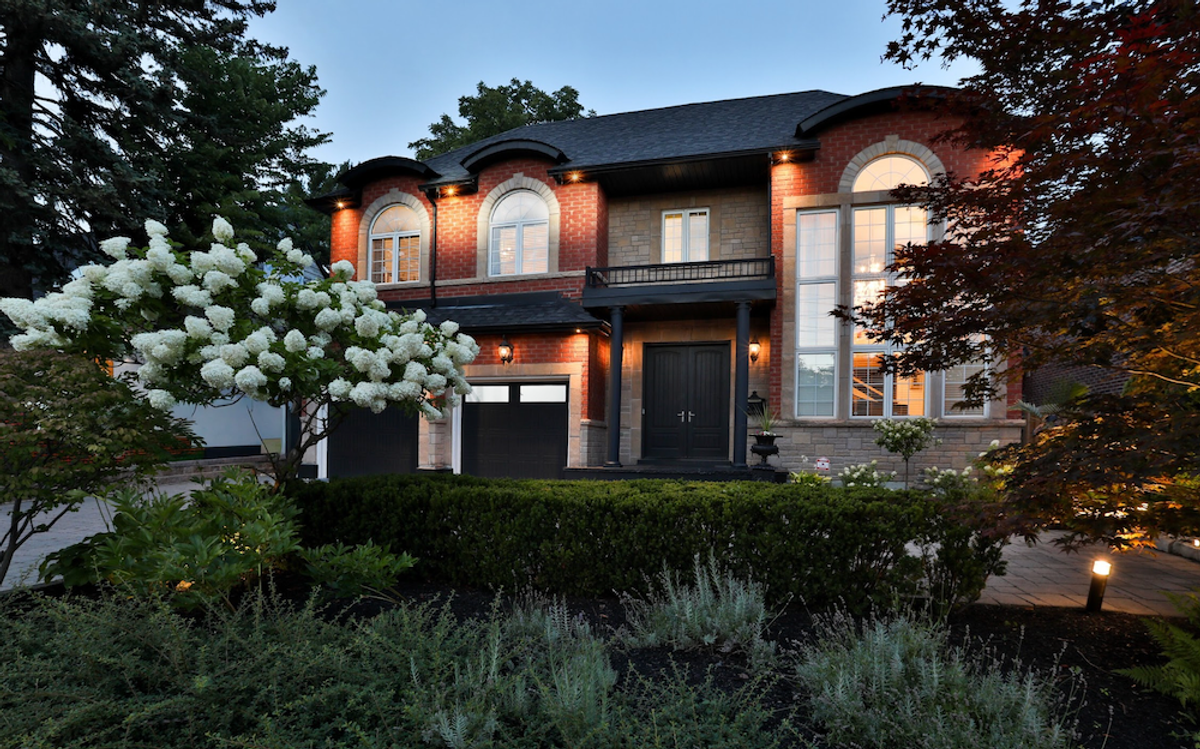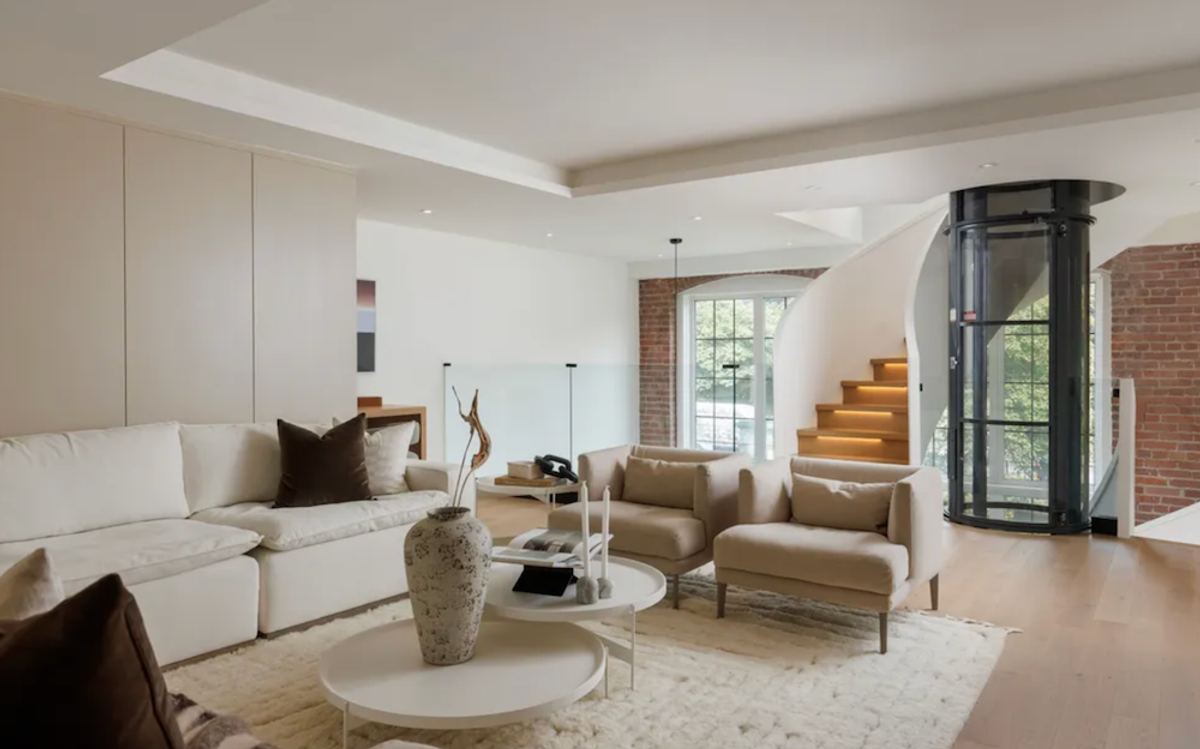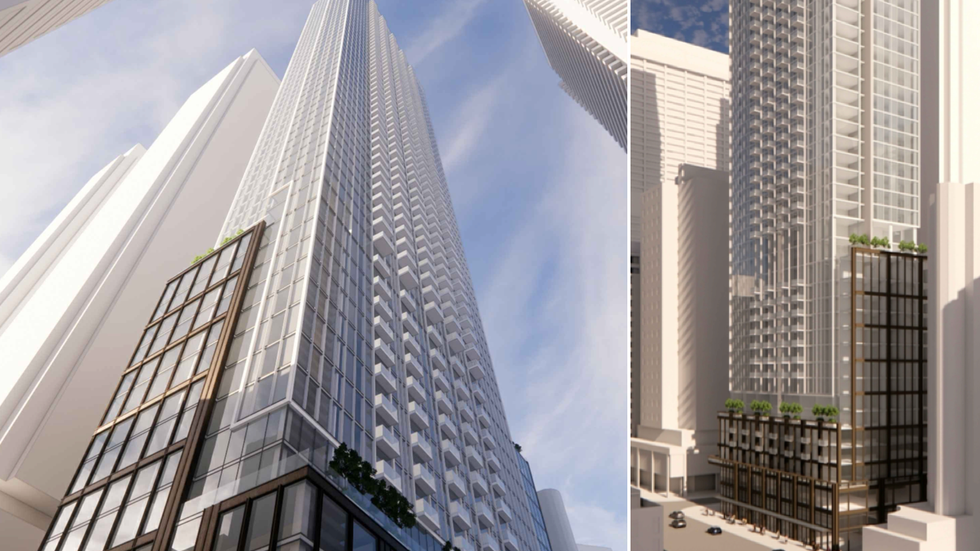‘Trend of the Year’ is part of STOREYS' annual editorial year-end series. You can find the rest of our 2024 selections here as they're released throughout the week.
After years of minimal new rental supply, shiny and new purpose-built rentals have changed Canada’s real estate game in the past decade.
As the name suggests, purpose-built rentals are properties built specifically for tenancy rather than ownership. But that doesn’t mean they don’t have all of the bells and whistles — plus more — of today’s new luxury condo developments.
More recently, purpose-built rentals have attracted the interest and dollars of developers, investors, and industry leaders who have shifted their focus away from the embattled preconstruction condo market. What was once a select group of builders has suddenly become a wide collection.
A Purpose-Built 'Rentalssance'
Purpose-built rental starts have quadrupled in the past decade, highlights RBC Economist Rachel Battaglia in a new report. “The surge in purpose-built rentals in Canada is the result of several converging factors,” Battaglia tells STOREYS. “Recently, a significant number of rental completions have hit the markets, as projects initiated years ago finally reach completion. This reflects both a response to escalating demand and targeted government policy aimed at fostering rental construction.” She says Canada is experiencing a purpose-built rental "renaissance."

Battaglia points to two key trends on the demand side as contributors. One is a shift in demographics and another is declining home ownership and affordability. “Canada’s population has been growing at an extremely high rate — one that we’ve not seen in decades,” says Battaglia. “Population growth has come almost exclusively from newcomers to Canada, who tend to rent for their first 5-10 years. Deteriorating affordability has pushed more Canadians towards renting. The national homeownership rate fell by 2.5 percentage points since peaking at 69% in 2011, reflecting a broader shift in housing tenure.”
Battaglia highlights how increased demand has driven rents higher, catching the attention of both developers and policymakers. “Governments have stepped in with measures to boost rental supply, including the federal National Housing Strategy and, more recently, Canada’s Housing Plan — which include programs and initiatives for boosting rental housing construction,” says Battaglia. “Ontario and British Columbia implemented their own housing plans as well, with measures to get more rental housing built.”
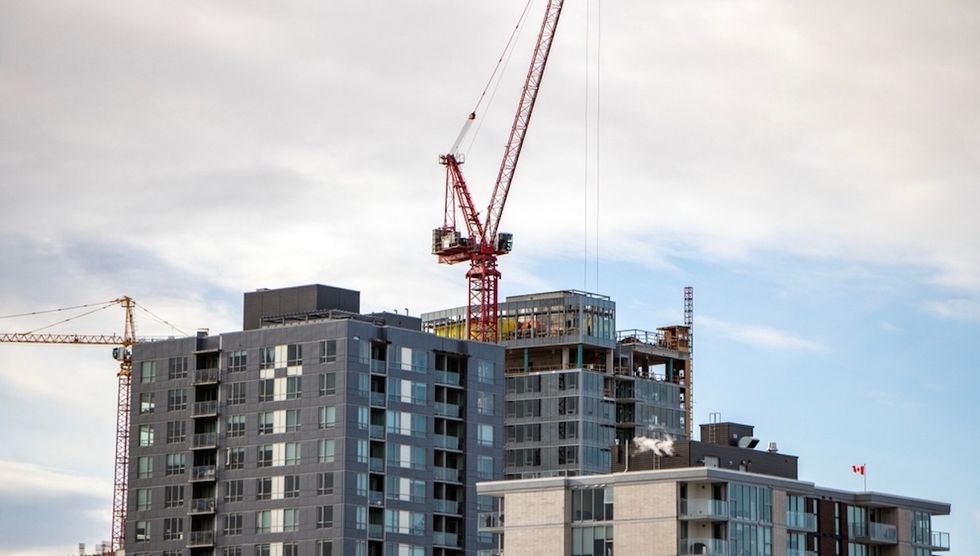
The Pivot
With Canadian condo sales in a deep slump, more Canadian developers have shifted their focus from condos to purpose-built rentals as of late. They’ve even converted what were once intended condo projects into rental developments due to the lack of demand in the pre-construction condo market, which makes it difficult to launch new condo projects.
“Over the past 10 years, there has generally been growing interest among developers to build purpose-built rentals amid tight supply, rising demand, and quickly increasing rents,” says Shaun Hildebrand, President of Urbanation. “However, until recently, it’s been more economically attractive for developers to build condos. Now, with demand for new condos becoming virtually non-existent, some are pivoting to purpose-built rentals. This is also being encouraged by federal loan programs and incentives for building purpose-built rentals, as well as interest rates starting to come down.”

Earlier this month, Toronto-based Baker Real Estate — a leader in pre-construction condo sales for over three decades — announced the launch of its own dedicated purpose-built rental division. This will help developers achieve stabilized buildings with full occupancy faster, Todd Nishimura, Baker Real Estate’s vice president of purpose-built rentals, tells STOREYS.
“Although we had been observing the industry for some time, the limited number of purpose-built rental projects kept it on the backburner,” says Nishimura. “However, with the recent shift in the market, our clients have been requesting Baker’s signature high-intensity, fully customized, and polished sales execution for purpose-built developments. Recognizing a gap in the market due to the unique nature of purpose-built proformas, we saw an opportunity to step in and do what we do best: consult, execute, rent, and close deals with precision and expertise.”
In November 2022, Hazelview, an owner, developer, and manager of global real estate investments, announced its first ever master-branded collection of amenity-packed purpose-built rentals in key cities across the country.
“The demand for housing has always exceeded what our supply market has been for a number of years, especially with the incredible rise in population in recent years,” Michael Tsourounis, Managing Partner, Chief Investment Officer at Hazelview tells STOREYS. “Rental housing has been needed in this country for decades, but we haven’t seen a lot of new supply in 30 years. The reason many projects have shifted from condo to rentals is that the shadow market – the investor market – was really supporting the rental market for a number of years while investors were able to buy pre-con condos and sell them to make a gain, or have their units enter the rental pool. So, developers were able to realize profits in a quicker manner by building rentals."

Tsourounis points to Canada's aging population and aging workforce as a reason the future of rentals is strong. “Canada is going to have to turn to immigration to continue to have economic growth and combat the side effects of an aging population," he says. "So, the demand for housing has a huge amount of tailwinds behind it, which is why people are looking at building purpose-built rentals as a long-term investment.”
There is a multi-decade lag in supply, suggesting potential for long-term returns for investors with a suitable investment horizon, Tsourounis adds.
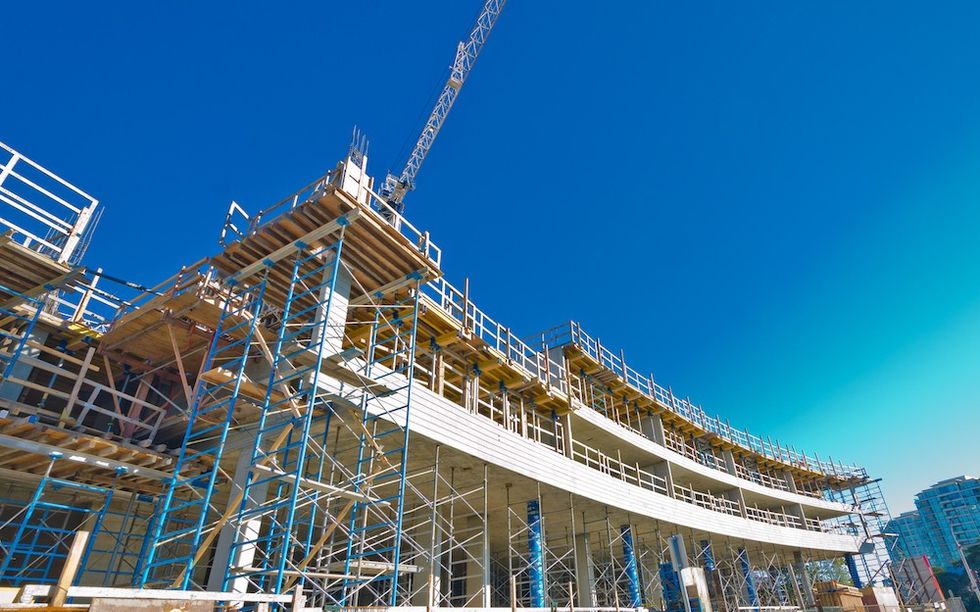
The Economics
When it comes to the economics, it makes financial sense that developers are exploring purpose-built rental projects as an alternative. “The economics behind purpose-built rental developments are drastically different from those of condos,” says Battaglia. “Condos offer up-front funds from the sale of each unit, proceeds which are often used to fund subsequent construction projects. On the other hand, purpose-built rentals provide smaller payments over a longer time period. Removal of GST on purpose-built rental projects has helped improve the financial viability of rental construction projects, as this tax bill was previously paid by developers.”
Nishimura highlights how developers typically need to sell 65-75% of condominium units at specific price thresholds to secure financing and move forward with construction.

“However, in today’s market, fewer projects are reaching this sales benchmark quickly enough, delaying development and leaving developers paying out more to hold,” says Nishimura. “In contrast, purpose-built rental projects can proceed without the same pre-sale requirements, allowing for faster construction timelines. The government is currently incentivizing purpose-built rental developments with measures like development charge breaks and lower financing interest rates, making these projects more financially viable than ever before. While some industry advocates are pushing for similar development charge reductions in the condo sector to stimulate new development, the current environment is driving a rise in plans for purpose-built buildings.”
Redefining the Tenant Experience
The benefits of purpose-built rental living are numerous for the end-user. For example, Fitzrovia’s portfolio of urban purpose-built rental projects include everything from basketball courts designed in partnership with the Toronto Raptors, resort-style rooftop pools, cafes and bars, to access to virtual healthcare from The Cleveland Clinic Canada and even a preschool and kindergarten. In addition to these lifestyle perks, tenants can rest assured that they won’t lose their unit because a landlord wants to sell or move a family member in.
“Purpose-built rental developments offer significant advantages for residents, starting with security of tenure — residents who pay on time and remain in good standing will never be evicted due to the owner’s decision to sell or move in,” says Nishimura. “Purpose-built rentals also feature professional property management, meaning residents can rely on dedicated teams to address maintenance issues, such as leaky faucets or backed-up toilets, with just a call or text. Additionally, these buildings foster a strong sense of community through resident-focused events like BBQs, holiday parties, and fitness classes. Many also incorporate modern conveniences, such as smartphone apps that allow residents to pay rent, book amenities, request maintenance, control their thermostats, or even unlock their front doors.”
Fitzrovia founder and CEO Adrian Rocca says it’s a misconception that these new purpose-built rental units are largely unattainable to the average city dweller. “The reality is, if you look at the 30% shelter cost income ratio on rents – and it depends on how many people are in the household – you need about $120k of gross household income [to afford rent], which the top 25-30% of Torontonians actually earn,” says Rocca. “So, the biggest misconception is that this is a luxury product that’s only geared to 1% of the market.”
Tsourounis, meanwhile, highlights that Canada is catching up to other cities. “If you look at how common it is to rent in many other major cities globally, there’s no stigma,” says Tsourounis. “So, I think it’s a bit of an evolution that we are experiencing. These rental buildings are homes that people are really happy to be living in, with all the amenities and technology.”
A Solution to the Housing Crisis?
While purpose-built rentals may indeed be within reach for many, are they a solution to Canada’s relentless housing crisis? Maybe not – but the growing segment is part of it. “Increasing the supply of housing across the spectrum is a step towards improving housing affordability in Canada,” says Battaglia. “Though the construction of higher-end housing may not directly address the needs of lower-income households, increasing overall supply creates space for filtering. As higher-income households move into newly built units, this releases their former unit for occupancy by households with lower incomes.”
In Canada’s current climate – one where demand for housing outstrips supply nationwide – today’s sky-high rents will only drop when significant new supply comes to market. “Current projections indicate it will take years for the market to reach equilibrium,” says Nishimura. “In the meantime, as fewer condo completions are expected in the coming years, purpose-built rental projects under construction today will play a critical role in keeping housing costs reasonable. Without these developments, the ongoing shortage could push prices to unsustainable levels, making it nearly impossible for people to live in major cities. As the purpose-built rental market matures, developers are increasingly targeting a wider range of socioeconomic demographics, moving away from luxury amenities like golf simulators and cold plunge pools to offer more modest, affordable options that better meet the needs of everyday renters.”
Hildebrand calls purpose-built rentals the de facto form of affordable housing supply in the Greater Toronto Area (GTA). “Even though rents on new builds are high, they are supported by incomes and help open lower-cost rental supply as renters move up within the market,” he says. “Ownership costs associated with purchasing homes in the GTA are substantially higher than rents in brand new buildings.”
A Pause in Purpose-Built Rentals?
Despite the promising potential offered by purpose-built rentals, according to Rocca, any purpose-built rental “renaissance” is in the past – at least, for now it is. Like the pre-construction condo market, sky-high interest rates and costs to build – which include climbing development fees and construction costs – have resulted in a major slowdown in new purpose-built rental projects. This is a serious cause for concern, says Rocca.
Rocca highlights how new purpose-built rentals are down 75% from two to three years ago. “Interest rates are squeezing development margins; hard costs went up 41% and interest rates are expanding cap rates, which is compressing multiples, which is in return squeezing development margins across the board,” says Rocca. “New starts are down on rentals big time.”

Rocca drives home that we are dealing with a critical housing shortage on the new-build front. He emphasizes that current construction levels are significantly below the required number of units to meet demand, especially with increased immigration targets. The situation is only expected to worsen after 2025 when new supply “drops off the map” due to a lack of new housing starts.
“The economics of building rental are difficult due to high development costs and taxes, and the large amount of upfront capital and long-term investment payout required,” says Hildebrand. “So, any increases in rental development will likely remain modest until circumstances improve to make development feasible at a large scale. Complicating matters at the moment are changes in federal policies on immigration and temporary residents, which creates more uncertainty for the market outlook.”
For meaningful change to occur, Rocca says that both development charges and property taxes need to be waived for a good two to two-and-a-half years. “You can create a sunset around it and get as much new supply to the market quickly,” he says. “You need an expansion of the ACLP debt program with CMHC so we can create some affordable units as well, but the two need to be in lock-step with one another. I don’t think that affordable [housing options] can be included in a development charge waiver to get more supply – it should apply to all market rental units.”
That doesn’t mean that things have ground to a halt for Fitzrovia. The developers just proposed a new 49-storey mixed-use rental project for the St. Clair and Avenue Road intersection in Toronto. And they're not alone, as 2024 brought similar proposals across the country.
For 2024, the pivot to purpose built rentals was a trend too popular to ignore. Whether or not enthusiasm from this wider spectrum of builders will last is another question entirely.



